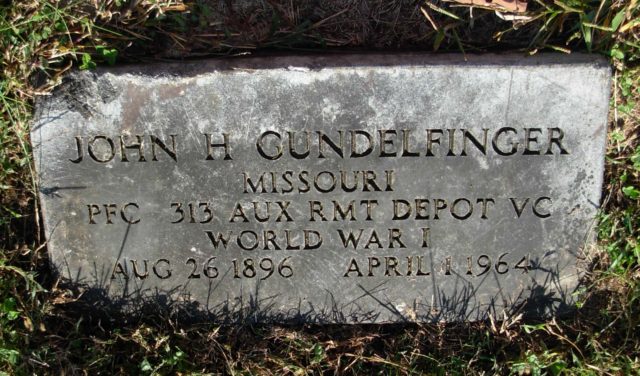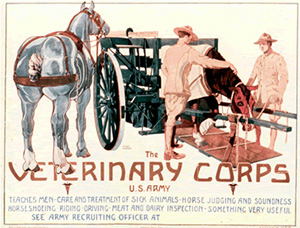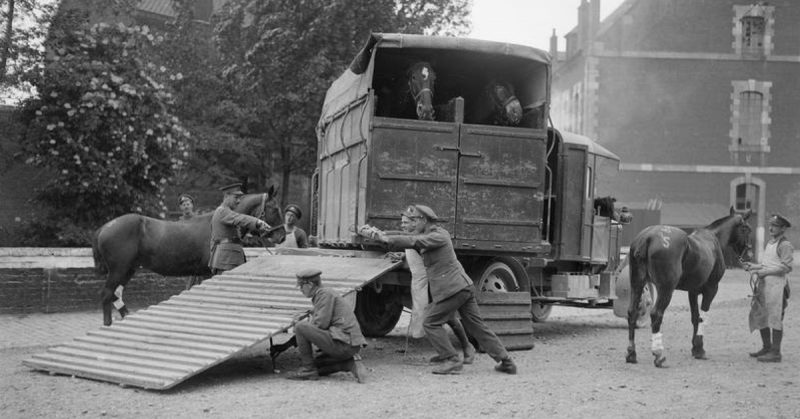War History online proudly presents this Guest Piece from Jeremy P. Ämick, who is a military historian and writes on behalf of the Silver Star Families of America.
According to Nancy Thompson, chairman of the Cemetery Resources Board of the City of Jefferson, Mo., the Old City Cemetery and the Woodland Cemetery serve as the final resting place for scores of local veterans, in addition to the number of veterans that are interred in the adjacent Jefferson City National Cemetery.
Within Woodland Cemetery, however, the cemetery board has indentified the graves of two local veterans of World War I, one of whom, Thomspon sadly notes, has been nearly forgotten since he left behind no children to perpetuate his memory.
John H. Gundelfinger was born in Jefferson City on August 26, 1896, as noted on his WWI draft registration card. The son of William H. Gundelfinger, who worked in a local shoe factory, John followed in his father’s footsteps by working for the Interational Shoe Company in Jefferson City prior to his military service.
“We have very little information about him other than what is found on the Find A Grave website,” said Thompson.
Gundelfinger’s draft registration card reveals several additional details, noting that the Jefferson Citian was not required to register under the Selective Service Act until the second registration held on June 5, 1918. The first registration, which was held on June 5, 1917, required all males between 21 and 30 years of age to register, but Gundelfinger was nearly two months shy of turning 21 at that time.
On June 27, 1918, a total of 1,200 draft order numbers were drawn, which included Gundelfinger’s. Several weeks later, on August 15, 1918, he began his military service when he was inducted into the U.S. Army in Jefferson City.

His only sibling, a brother named William Edward Gundelfinger, was inducted into the U.S. Army on October 18, 1918 and remained with the Student Army Training Corps at Washington University in St. Louis during his brief time in the military.
The 21-year-old John Gundelfinger became a member of the Veterinary Corps (VC) and was first assigned to a site in North Charleston, S.C., referred to as Animal Embarkation Depot 302. With the capacity for housing 10,000 animals, it was here, the book “The Quartermaster in the Year 1917 in the World War” explains, that soldiers of the VC provided “for the care and conditioning of public animals prior to their issue to troops or shipment overseas …”
“There was a total of 300,802 animals purchased in the United States from the beginning of the War; all of which had to be transported from point of purchase to a Remount Depot, and in most instances again shipped to ports of embarkation or to a Remount Depot near the Atlantic Coast so that they could be readily available for shipment overseas …” the aforementioned book further noted.
The website of the U.S. Army Medical Department states that the Veterinary Corps was established through the National Defense Act on June 3, 1916 and, although comprised of 72 veterinary officers and no enlisted personnel at the beginning of World War I, grew in size to 2,312 officers and 16,391 enlisted personnel within 18 months.
Though Gundelfinger’s duties kept him in the United States during the war, his service with the Veterinary Corps played a critical role in ensuring the country’s success by supplying healthy horses and mules that could be used to carry supplies and pull guns and other types of heavy equipment throughout France.

Gundelfinger’s service kept him in South Carolina until nearly three months after the war’s end, but in February 1919, he was transferred to the Veterinary Corps’ Auxiliary Remount Depot No. 313 at Camp Shelby, Miss., where he performed duties that were primarily clerical in nature until receiving his discharge from the Army on May 21, 1919.
Census records indicate that after his return from the war, he lived with his parents and became involved in the real estate industry as a “land appraiser.” His name would appear frequently in the local area newspapers during the summer of 1952 over a dispute with the Capital City Water Company.
“The wrangle stems from complaints by Green Berry Rd. residents about low water pressure and the company’s pledge to improve the service,” reported the Jefferson City Post-Tribune on July 14, 1952. “The company wants easement rights across Gundelfinger’s property … for the laying of an 8-inch water main.”
Despite the argument by Gundelfinger’s attorney that the water company failed to make a reasonable offer for easement rights, the Circuit Court granted the easement through a “decree of condemnation” on July 28, 1952.
As the years passed, the WWI veteran remained active in real estate pursuits; however, the 67-year-old Gundelfinger passed away in St. Louis on April 1, 1964 from complications related to a surgery, dying a single man with no children.
All that remains of the veteran’s legacy is a timeworn marker quietly tucked within the confines of Woodland Cemetery, but Thompson and the members of the Cemetery Resources Board are hopeful the experiences of Gundelfinger and other local veterans can be remembered and shared with the younger generations.
“I believe we need to respect the memory of all who have gone before,” said Thompson. “Veterans of the earlier wars, WWII and prior, suffered particular hardships and I don’t think that we can fully appreciate their sacrifices 100 or more years later. If their stories aren’t retold periodically, their accomplishments and contributions fade and are forgotten.”
She added, “I don’t want these people to be forgotten.”
